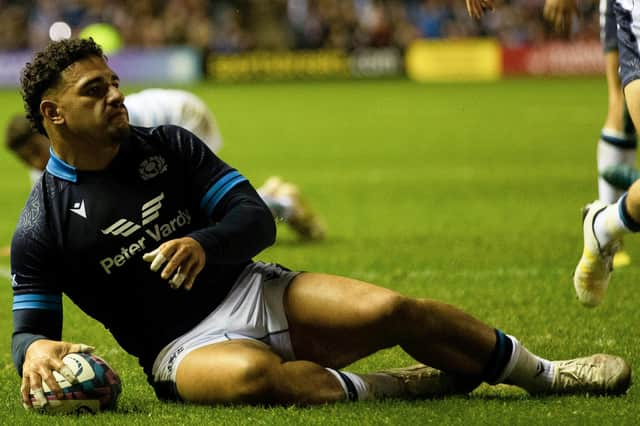Centres are such an important part of rugby - and Scotland are a decent place now


The two chief requirements of a 12 is that he should be ready to run straight and breach the gain-line, while being also adept at passing off either hand. The description of a 12 as a crash-ball player dates from the All Black teams half a century ago. Having a hard running centre who regularly gets well across the gain line opens up attacking possibilities. We mostly recall the great Hawick team of the 1970s for its scrum strength and rucking, but the combination of the powerful Alastair Cranston and magic-footed Jim Renwick in the centre was a key to Hawick’s dominance of the club game.
Today France and Ireland are the dominant Six Nations countries, the French centre partnership of Jonathan Danty and Gael Fickou, the latter a defensive master. Danty is now injured and will miss the Six Nations but France have a comparable replacement in the 22 year-old Yoram Moefana, who scored a try against Scotland when Danty was missing last season. Likewise the Irish combination of Robbie Henshaw and Garry Ringrose is essential to Leinster and Ireland’s success, just as the 12/13 partnership of Gordon D’Arcy and Brian O’Driscoll was some years ago.
Advertisement
Hide AdAdvertisement
Hide AdEngland haven’t has this kind of 12 since Manu Tuilagi was young and fit. Owen Farrell is a very fine player, but a better fly-half than centre. Under Jones England have regularly fielded a 10/12 combination, understandably since they have three international class 10s (George Ford, Farrell and Marcus Smith) but no genuine 12.
If we look back at two of Scotland’s most successful series –1990 and 1999, both, sadly, some way distant now – you see the same effective midfield co-operation. Sean Lineen and John Leslie at 12, both reared and developed in New Zealand, were direct runners with the ability to pass off either hand when they had drawn their immediate opponents. Lineen had Scott Hastings outside him, Leslie had Alan Tait. It was a near perfect combination, fly-halves, Craig Chalmers, first, and then Gregor Townsend benefited, being given space and options. Gregor perhaps never played better than in 1999, the year in which he scored a try in each Five Nations match. There were of course other reasons for our successes then, but undoubtedly getting the midfield selection right was a prime one.
Now Chris Harris has cemented his place at 13, recognised as a master organiser of defence, but 12 has been a problem for a long time inasmuch as nobody has made the jersey his own. Sam Johnson has come closest to doing so. He has had fine and memorable games, notably that extraordinary second-half of the 38-38 Calcutta Cup. Yet, while he regularly breaches the gain line, he isn't always a good link-man. Injured for much of this season, Johnson will doubtless be challenging again when fully fit. One might fairly say he has never let Scotland down, without however quite offering everything looked for from a 12.
Now however we have two candidates, either of whom in slightly different styles, might be the 12 that Townsend needs as the last piece in what can be a glittering backline.
Sione Tuipulotu is, I suppose, the man in possession after his outstanding match against Argentina. Powerful with a wicked sidestep and, evidently, keen rugby intelligence. There is something of a modern day – that’s to say, considerably bigger and more powerful Jim Renwick about him. It will be a surprise, to me anyway. If he is not wearing the 12 jersey at Twickenham. But then there is also young Cameron Redpath who made a fine debut there two years ago before being out injured for two long. He is a different sort of player, one who glides trough scarcely visible gaps, and one with deft hands and a keen rugby intelligence. He reminds me a bit of John Leslie, one who might help to make things happen for inn Russell as Leslie did for Gregor himself. Whichever gets the nod – and of course Tuipulotu comfortable at 13 too – the future for Scotland’s midfield looks brighter than for some time.